Today we are taking a look at the Kingston A2000 1TB SSD. This is only the second Kingston branded drive I has looked at; the only other drive was the SATA-based Kingston SA400 which was included in our inexpensive SATA roundup article. The A2000 appears to be the middle child in Kingston’s SSD lineup, sitting between the entry-level NV1 series and the higher-end KC2500 series. We hope to take a look at the other Kingston drives in the future, but for today we will evaluate the A2000 on its own merits.
Kingston A2000 1TB NVMe SSD
The Kingston A2000 1TB comes in a single-sided M.2 2280 (80mm) form factor.
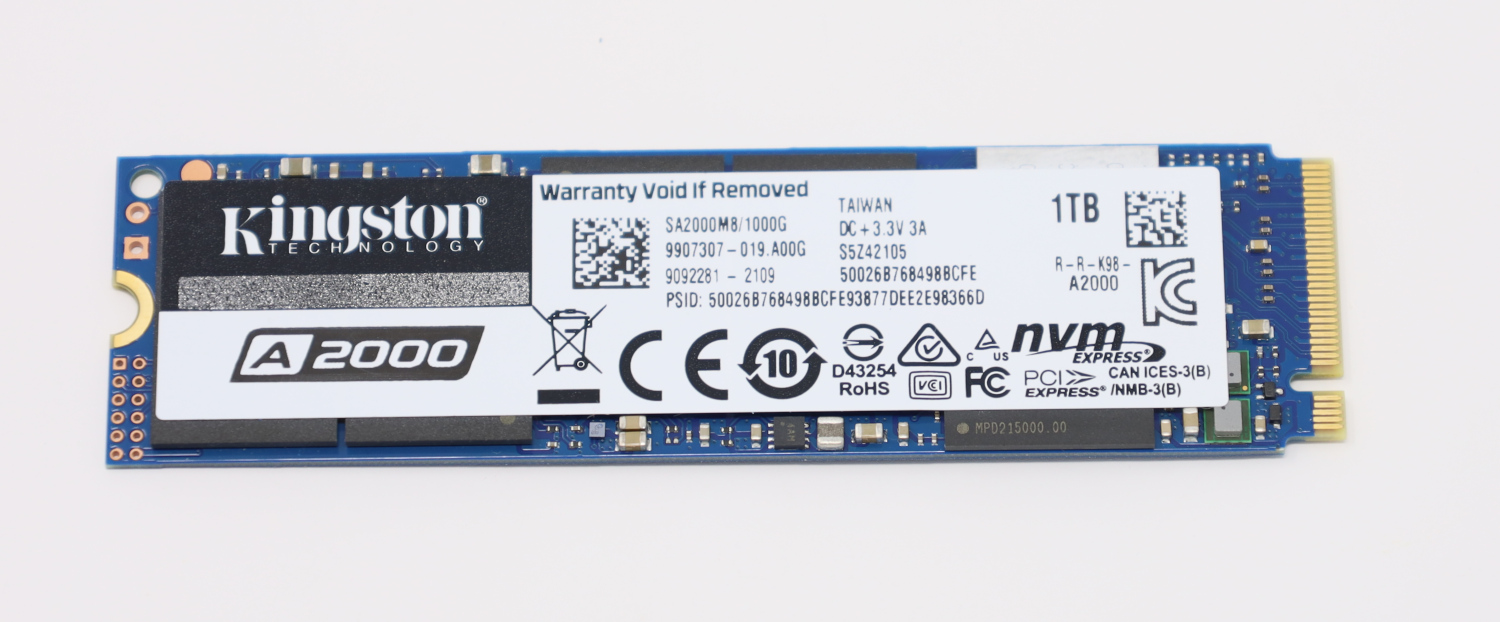
The front of the drive is home to the Silicon Motion SM2263EN controller. We have encountered this controller before on both the Crucial P1 and the Intel 665p. Critically different from those two drives is the NAND in use; both the Crucial and Intel drives were operating with QLC NAND, while this Kingston A2000 1TB drive is equipped with 96-layer Micron TLC. Similar to the P1 and 665p, the A2000 also comes equipped with a DDR3 DRAM cache.
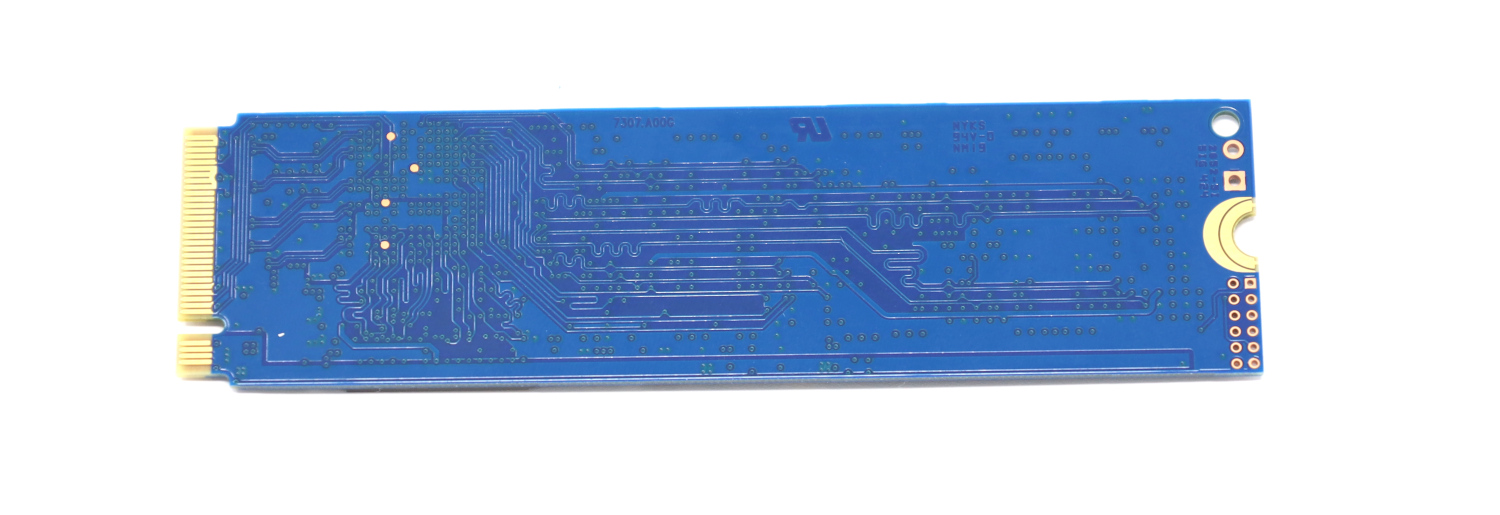
The back of this single-sided drive is devoid of anything making this a single-sided SSD.
Kingston A2000 Specs
The Kingston A2000 line of drives only has two models; 500GB and 1TB.
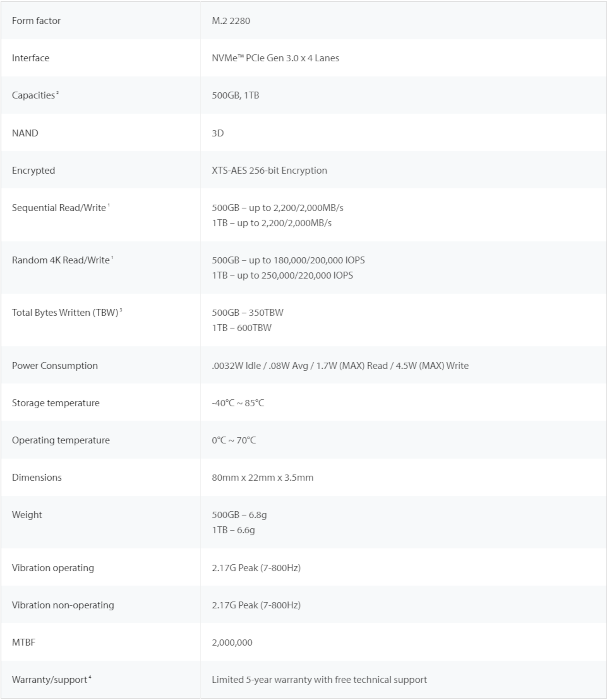
Our 1TB drive is rated at 2200 MB/s read and 2000 MB/s sequential write. These rated speeds position the A2000 as a more entry-level device, akin to the WD Blue SN550 1TB or the previously mentioned Intel 665p. Endurance is rated at 600 TBW, which is seemingly the new standard for this class of 1TB drives. It is also amusing is that yet another vendor has mistakenly decided that TBW should stand for Total Bytes Written and then only given you 600 of them. TBW should be Terabytes Written. Along with the seemingly-standard endurance rating, the Kingston A2000 1TB is backed by a 5-year warranty.
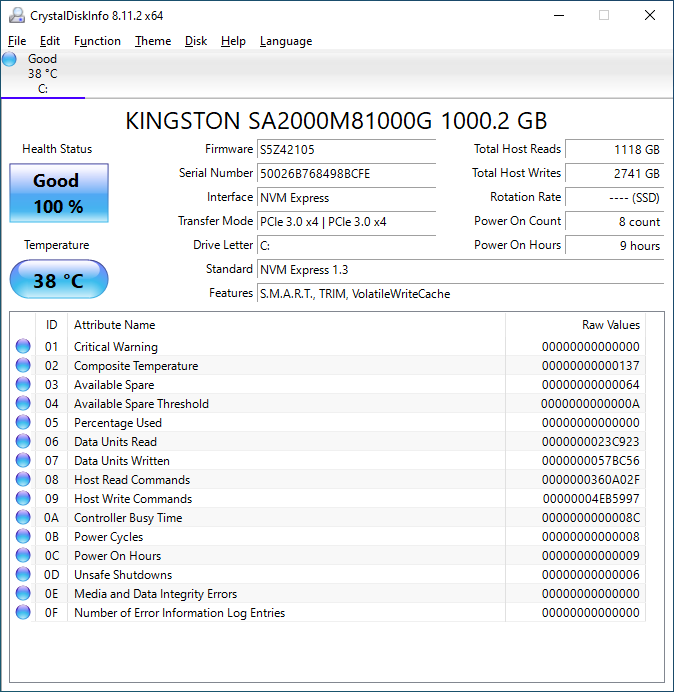
CrystalDiskInfo can give us some basic information about the SSD, and confirms we are operating at PCIe 3.0 x4 speeds using NVMe 1.3.
Test System Configuration
We are using the following configuration for this test:
- Motherboard: ASUS PRIME X570-P
- CPU: AMD Ryzen 9 5900X (12C/24T)
- RAM: 2x 16GB DDR4-3200 UDIMMs
Our testing uses the Kingston A2000 1TB as the boot drive for the system, installed in the M.2_1 slot on the motherboard. The drive is filled to 85% capacity with data and then some is deleted, leaving around 60% used space on the volume.
Next, we are going to get into our performance testing.

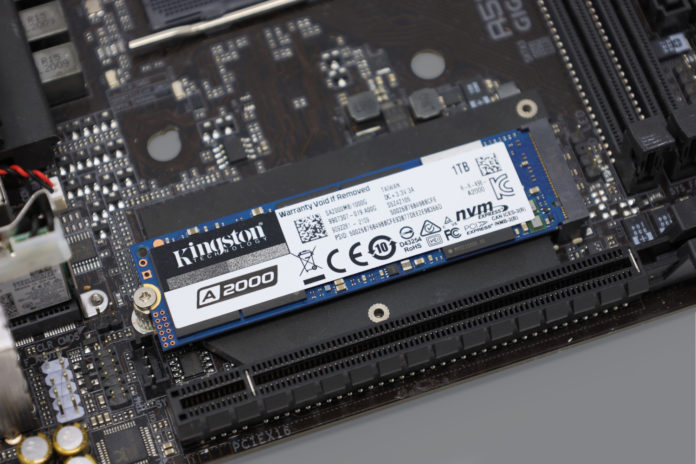



Thanks for the test! Was the most recent firmware installed on the A2000?
One thing to note: Where the A2000 really shines in comparison to the SN550 and other SSDs in this price range is mixed read/write workloads, perhaps due to its DRAM cache. See e.g. TPU review:
https://www.techpowerup.com/review/kingston-a2000-1-tb-m-2-nvme-ssd/4.html